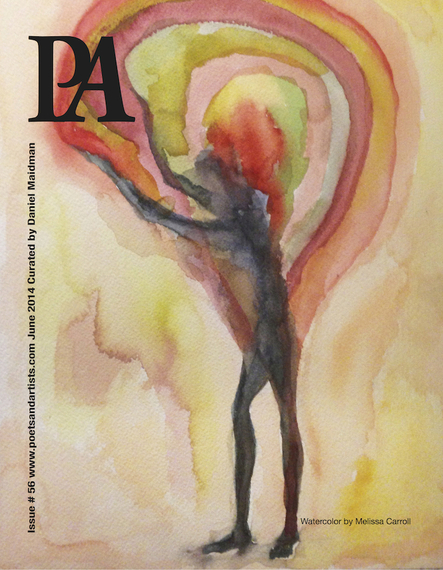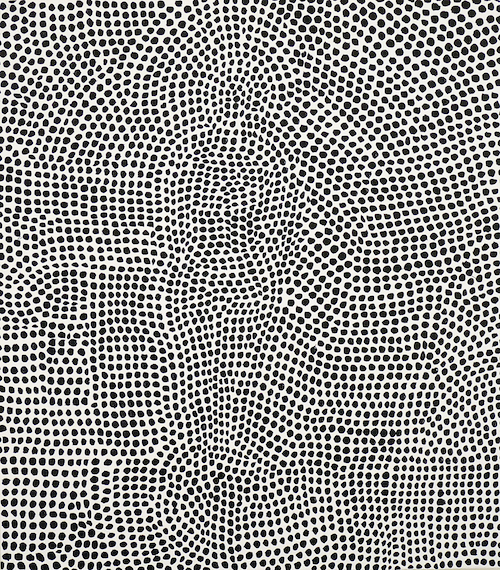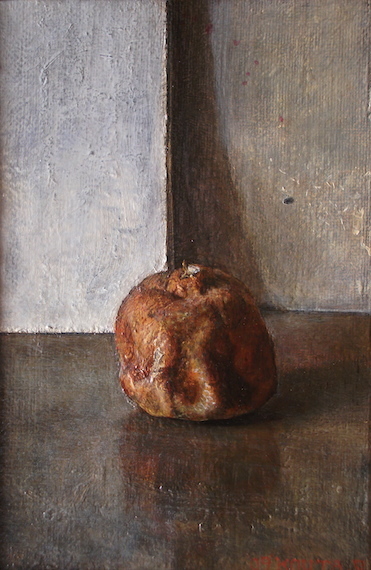I'm going to shamelessly abuse my posting privileges here to tell you about a project of mine I'm very proud of. I've spent the past few months curating an issue of the magazine Poets/Artists, and it's finally up and viewable here. The graphic at the link clicks through to a free online preview of the entire thing, as well as pages for ordering ipad or hard copies. I can best explain what this is with excerpts from my introductory essay, "Celebration."
Celebration
Before anyone ever published any of my artwork, I followed Poets/Artists, because the creator-editor, Didi Menendez, was showcasing the cool, talented artists I wished I knew. This was before social media connected us all, when we still lived and worked in pockets of solitude and local association. I lobbied Didi for three years to publish my paintings, and she patiently ignored me for three years. My work wasn't good enough yet. Happily, it got better, by my lights, and hers, and ultimately she relented. I was so excited to join the ranks of those I had admired across a seemingly unbridgeable gulf.
...
For the issue she eventually invited me to curate, I decided to show as much work as possible. I assigned two pages to each artist, with no text except identification of the work, and biographical paragraphs at the back. I don't particularly like artist interviews, because I like just looking at the work and trying to hear what it has to say.
...
This space is the art world through the eyes of one artist. I am making public here the semi-hidden cosmopolitanism which characterizes many artists. It is only mine, this present strain of cosmopolitanism, with all of its flaws and omissions - and they are many, because my knowledge and taste are works in progress. There will be future installments of this project, and I hope to share with you marvelous new things.
I believe intensely in the meritocracy. I believe there is good art and bad art, and that it takes a special mix of talent, discipline, skill, and creativity to make good art. But I also believe we must be on guard against settled ideas of what good art is. I reject categorical exclusion. I believe that artists possessed of the needed virtues are making the needed work in every branch of the arts, and sometimes inventing new ones. I am always looking for these artists, and seeking to learn from their work.
In one sense, art is a useless thing. It is a luxury good and inessential to the function of the human being as an organism. In another sense, art is as essential as food. Civilizations, since the beginning, have created objects that we would call art, and they have sacrificed much in the way of scarce resources to do so. Art is essential not to our organism but to our humanity. I think of it as food in this way, and I take an approach, in sharing work, of "Whoever is hungry - let that one come and eat. I will set a broad table; there will be room enough at my table for all who wish to join in its meal. I will build a broad kitchen, and invite every chef who is passionate and excellent with regard to his or her cuisine. No cuisine is barred; no kind of food is barred; no guest is barred."
There is a real world apart from our table, in which art functions as a social and economic ecosystem. I have the good fortune to include here artists from throughout this ecosystem, from the unknown and unpublished to the legendary; from those who give away their work for next to nothing to those whose art commands stratospheric prices. That world, in all of its complexity and hierarchy, is not the world of our kitchen and our table. Here, all who are dedicated are welcome to cook, and all who are hungry may possess art in the only way it can meaningfully be owned: as the nourishment of the soul.
---
So much for the essay. Ultimately, I collected work from 98 artists and 5 poets, from around the world.
Several artists show work here for the first time. Carolyn Marks Blackwood debuts a haunting body of work in which she fuses photography with quasi-personal narrative. Kyle Staver and Michelle Doll share new paintings, and Graydon Parrish presents new drawings. I myself am publishing for the first time a Black Wall painting, one of an ongoing series of text-image collaborations with novelist China Miéville, one of my favorite living authors.
I could write about each piece of artwork in the magazine; I chose them all with love. But let me discuss just two, and leave you to consider the rest.
This is an oil painting by Carey Maxon. I first stumbled onto Carey Maxon's work at an open studio some years ago. I experienced a sudden and unexpected shot of delight looking around her studio at work like this. And then I left, thinking that would be the end of it. Maxon's work is not, by nature, my kind of thing.
But it wouldn't leave my head. So after having it tickling the back of my mind for maybe six or seven months, I brought it forward to consider it what it was about it. I don't think I even looked at her work again, just then. I could remember it. I remembered that there were recognizable objects subsumed in the fields of irregular dots -- faces, figures. So that your eye vibrated around the cascading dots, but kept catching on the remnants of the recognizable.
Naturally I went about deducing how such an effect could be produced. I figured that she started with those submerged objects, so that in an early stage the canvas would have just an outline of the thing. And then she would begin to build up her dots from there. In fact, this is what she turns out to do -- she documents her process on her blog here. Scroll down a ways, you'll find it. What is so enticing to me about this process is that it has a kind of ecological furriness to it. Say a great old tree falls over in the woods. There it is, stark, naked, and dead. It is sharp of outline and clear of aspect. But things start to grow on it: mosses, grasses, little wild flowers, shoots of other trees. Animals nest in it and burrow into it. Worms hole it. After a while, the tree is not so sharp of outline anymore. It becomes soft and indistinct. You cannot tell where its edges lie, underneath the carpet of the wild. It will sink back into its landscape for many years, and if you squint, or know it was once there, you will still see it for a long, long time.
Maxon's work is like that. It takes on the crazed jubilation of all-reclaiming nature. She hides the traces of intent and structure in her work, and then, like toadstools and mice, partway undoes them. Her algorithm is simple, but I think not anyone could execute it with her sense of joy. One dot is not like another dot; to me her dots are hers and no one else's.
Over years of contemplation, I transformed what started with a mysterious delight and a persistent tickle into another feeling; I treasure her work.
If Maxon tackles decay from the riotous perspective of nature, which treats it as a metamorphosis, then Kouta Sasai examines it from the tragic vantage point of humanity, which sees it as an end.
This is a small oil painting of a piece of rotting fruit. A cold light comes from the left, and the deep shadows of afternoons spent indoors bloom on the right. The fruit looks like some kind of citrus or persimmon. It is at that stage in its decay when desiccation has collapsed and hardened its surface, before it turns black and splits. It is likely to have a spot or two of mold on it.
How absolutely specific this depiction is! Those reds and oranges that shade off into green and brown and black. The impasto highlights, indicating the irregular surface reflecting blue-white afternoon light. The hard folding of the shriveled skin, a stub of a stem on top. So much is evident, and yet so little is painted. It is a small painting, consisting of very few marks, and those marks are not elaborate.
This painting is like Proust's madeleine, a tiny object out of which a world unfolds. First a world of sensation emerges, and then a world of portent and meaning. Surely we know exactly what state of vegetable decay we observe here. And yet the fact of decay is subsumed in the piece overall. The composition has a geometric order, an inverted T centered on the failing sphere of the fruit. The iron discipline of the T opposes the irregular decay of the fruit; it cautions us to be disciplined. The composition disciplines us, and the cold light calms us. These things detach us from the abject quality of the rotting fruit, giving us a space to contemplate it. The painting not only brings the event of decay before our eyes, but also gives us a means to meditate on the theme of decay. In the sensuality of the painting, we indulge in the horror of the thing. But in the design of the painting, we transcend a fate we too will participate in, groping toward understanding and equanimity. This painting is a very little thing, but it is a profound still life.
---
And who the hell is Kouta Sasai? I dunno. He's some guy I met over Facebook. When I asked, it turned out he was a little younger than I am, and he lives and shows in Hiroshima. But none of that is why I follow his work. I follow his work because his work is amazing. The work represents the caliber of work I tried to establish in this magazine, but the means of finding it represents another thing I find hopeful in the project: nobody told me my artists were good. I decided for myself that I liked their work, and I was able to find their work mainly through the anarchic media of Facebook and Instagram. Social media has its problems, but I prefer them to the hierarchic structure of the great institutions any day of the week. It takes a lot of energy to find art you like, and you've got to swallow some fear to declare that you like it. But if you don't do those things, your taste isn't really yours. My taste runs to Maxon and Sasai, and I am so glad to know their art.
This is true of all 98 of the artists (and 5 poets) included here. I am humbled by their company. I urge you to follow the link and enjoy their work. The issue is dedicated to the late Melissa Carroll, whose art graces the cover.
---
Links:
Poets/Artists: http://www.poetsandartists.com/substance-curated-issue/
Carey Maxon: http://careymaxon.wordpress.com/
Kouta Sasai: http://koutasasai.carbonmade.com/




